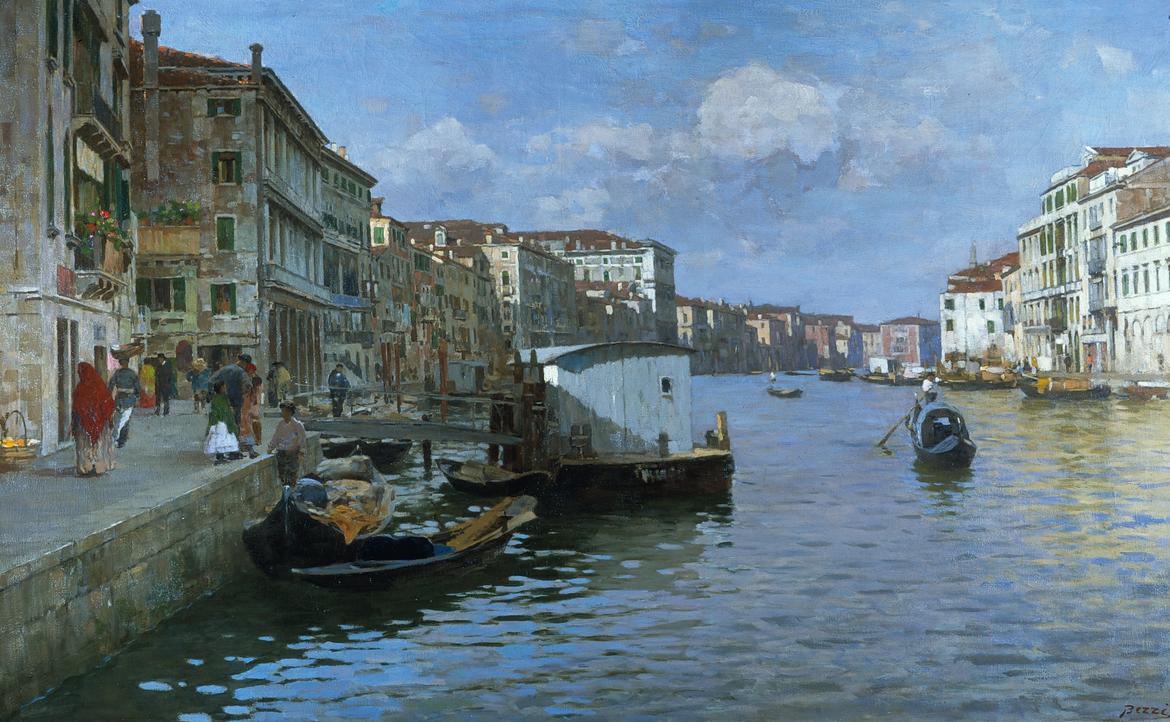Bartolomeo Bezzi 1851 - 1923. Scenes from everyday life

Always counted among the most important painters from Trentino, Bartolomeo Bezzi was also one of the main artistic promoters in the Italy of his time. Originally from Fucine di Ossana in Val di Sole, where he was born in 1851, he completed his training at the Brera Academy of Fine Arts and became a leading figure in the Milanese art scene. He moved to Venice in 1890 and contributed significantly to the foundation of the Biennale, which dedicated a personal exhibition to him in 1914. After staying in Verona and Rome, in the last years of his life he retired to Cles, where he died in 1923.
Bezzi's fame is mainly associated with landscapes, but his creative activity was much richer and more articulate than critics have so far acknowledged. This is revealed by the forty paintings on display at Castel Caldes - some of them for the first time - alongside with graphic works, period photographs, letters and documents, which are useful to reconstruct the painter's biography.
The exhibition of a series of sketches and preparatory drafts reconstructs for the first time the genesis of a lost painting, the largest ever executed by Bezzi. It is the decorative panel created in 1909 for the salon of the Hotel Mendelhof at Passo Mendola, which reworked a theme particularly dear to the painter, that of women at work by a fountain, already dealt with in 1893 in the work Vigilia della sagra, with which Bezzi presented himself at the International Exhibition in Munich.
The artist's original approach to the human figure is documented by a series of portraits and some lively genre paintings. His closeness to the poetics of verism is well represented by scenes of everyday life, set in rural settings or in the beloved cities of Verona and Venice.
Among the paintings of Venetian subjects, the Grand Canal, 1893, stands out, alongside "Giorno di Magro", in which the artist captures in real life women at the fish market in Campo Santa Margherita: a masterpiece of 1895 awarded a prize at the Universal Exhibition in Paris, an unpublished replica of the better-known version purchased at the Venice Biennale by King Umberto I.
The exhibition falls on the centenary of the artist's death and is part of a broader cultural project that will include, over the course of the year, further exhibitions at the Biblioteca della Torraccia in Terzolas, the Palazzo Assessorile in Cles and the MART in Rovereto.

